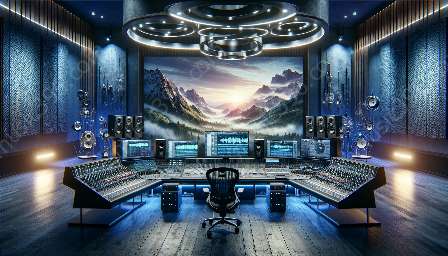Virtual reality (VR) has revolutionized the way we engage with digital environments, bringing a new level of immersive experiences to users. Central to creating a truly immersive VR experience is advanced audio signal processing, which plays a crucial role in simulating realistic soundscapes and enhancing spatial audio. In this topic cluster, we will delve into the intricate world of advanced audio signal processing in virtual reality, exploring the technologies and techniques that make it all possible.
The Key Components of Advanced Audio Signal Processing
Advanced audio signal processing in virtual reality relies on sophisticated algorithms and hardware to manipulate and render audio in real time. This involves various key components, including:
- 3D Audio Processing: In VR, the perception of sound direction and distance is essential for creating an immersive experience. Advanced audio signal processing techniques allow for the precise positioning of sound sources in a 3D space, enabling users to perceive sound as they would in the real world.
- Real-Time Spatialization: Spatial audio processing techniques such as HRTF (Head-Related Transfer Function) and binaural audio are employed to simulate the way humans perceive sound in space. This spatialization is crucial for creating a sense of presence and location within the virtual environment.
- Environmental Effects: To further enhance the audio experience, advanced signal processing can simulate environmental effects such as reverberation, echo, and occlusion, which add depth and realism to the virtual audio environment.
- Dynamic Sound Mixing: The ability to dynamically adjust the audio mix based on a user’s position and interactions within the VR environment is made possible through advanced signal processing techniques. This allows for adaptive and personalized audio experiences.
Challenges and Innovations in Advanced Audio Signal Processing
While advanced audio signal processing has vastly improved the immersive audio experience in virtual reality, it also comes with its own set of challenges. One major challenge is achieving high-fidelity audio rendering in real time, especially in computationally intensive VR environments. To address this, innovations in signal processing algorithms and hardware acceleration have been crucial.
Another key area of innovation is in the development of more efficient spatial audio rendering techniques. By leveraging machine learning and advanced algorithms, researchers are working to create more accurate and responsive spatial audio simulations that can adapt to complex VR environments and user interactions.
Applications of Advanced Audio Signal Processing in VR
The applications of advanced audio signal processing in virtual reality are wide-ranging and impactful. From entertainment and gaming to training simulations and therapy, VR experiences are made more compelling and effective through advanced audio processing. Some notable applications include:
- Immersive Gaming: Advanced audio signal processing enhances the immersion in VR games by creating realistic and interactive audio environments, heightening the overall gaming experience.
- Training Simulations: In fields such as aviation, healthcare, and public safety, VR training simulations benefit from spatially accurate audio cues, improving the effectiveness of training programs and the retention of information.
- Therapeutic Environments: Virtual reality therapy and relaxation applications use advanced audio processing to create calming and immersive environments, aiding in stress reduction and mental well-being.
Future Developments and Possibilities
The advancements in advanced audio signal processing for virtual reality continue to evolve, promising even more realistic and captivating experiences for users. As VR technology matures and becomes more accessible, the potential for audio signal processing innovations is vast.
New developments such as object-based audio rendering and interactive sound propagation are on the horizon, offering further opportunities for creating dynamic and lifelike audio experiences in virtual reality environments.


